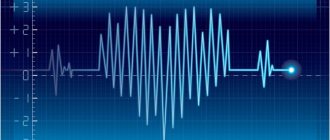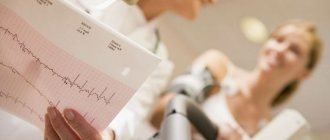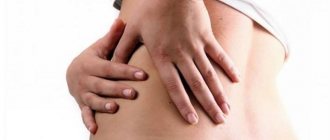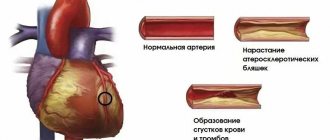The main causes of pain under the left shoulder blade
There are many causes of pain, but they can all be divided into 2 groups:
- Pain associated with pathologies of the musculoskeletal system. Pain under the left shoulder blade can be caused by osteochondrosis of the cervical or thoracic region, intercostal neuralgia, osteomyelitis, bone tuberculosis, scapula injuries, rib fracture or crack, myofascial or scapulocostal syndrome, glenohumeral periarthritis.
- Pain that occurs due to diseases of the internal organs. Pain under the left shoulder blade can be a symptom of heart disease, bronchopulmonary system, gallbladder, stomach ulcers, esophageal spasm, exacerbation of pancreatitis.
Rare pathologies that cause pain radiating to the shoulder blade include splenic rupture. This pathology requires immediate surgical treatment, since massive abdominal bleeding occurs with a risk of death.
No less dangerous for the body is pain in the back on the left under the shoulder blade, which develops against the background of cardiac diseases:
- dissection of an aneurysm of the ascending aorta;
- cardiac ischemia;
- angina pectoris;
- pericarditis, myocarditis, pericarditis;
- myocardial infarction.
Pain in the left shoulder blade from the back, which radiates to the arm and chest area, may indicate heart disease. Numbness of the limb often occurs. Depending on the disease, accompanying symptoms appear: lack of air, compression of the throat, squeezing of the chest, a feeling of cardiac arrest.
Pain under the left shoulder blade may appear during pregnancy due to increased stress on the back
Let's take a closer look at the main causes of pain under the shoulder blade from the back on the left.
Gallbladder diseases
With cholecystitis and cholelithiasis, heaviness appears in the right side, pain radiating under the shoulder blade on the left. An acute attack of inflammation of the gallbladder causes severe pain, nausea, vomiting, and increased body temperature. If it is provoked by obstruction of the bile ducts by a stone, the pain syndrome occurs as biliary colic.
With chronic inflammation, the nature of the pain is aching. Unpleasant sensations appear after eating fatty foods, with long breaks between meals.
Relapses of attacks can occur after physical or nervous strain, against a background of stress.
Subphrenic abscess
It is an accumulation of pus under the diaphragm. Most often, an abscess forms on the right side, but left-sided localization is also possible. The pathology is manifested by the following symptoms:
- pain in the left side, radiating under the scapula to the sternum;
- acute pain in the chest, which intensifies when inhaling;
- high body temperature;
- hiccups;
- increased sweating;
- nonproductive cough;
- dyspnea.
Without treatment, the disease can cause empyema, pneumonia, and lung abscess.
Bronchopulmonary diseases
Diseases of the lower respiratory tract (bronchi, lungs and pleura) cause both chest and scapular pain, which are always complemented by a specific bronchopulmonary clinical picture:
- increased body temperature;
- weakness, lethargy;
- labored breathing;
- chest pain (usually from the affected lung) of moderate intensity, which intensifies when coughing or inhaling;
- cough;
- wheezing.
Pain syndrome in the back of the back in the area of the left shoulder blade most often occurs with pneumonia, dry pleurisy, pneumothorax, acute bronchitis or abscess of the left lung.
With tumors, back pain in the area of the left shoulder blade is not accompanied by fever and high temperature, but there is a cough and breathing problems
Kidney diseases
Scapular pain may occur due to problems with the right kidney, since it is located close to the scapula. With its inflammation, the formation of purulent infiltrates or stones, the pain is often localized on the right, but can also radiate to the left. The pain is often dull or aching, but can also be sharp. It is paroxysmal, ascending, that is, it rises from the lower back, accompanied by nausea, vomiting, and elevated body temperature.
Diseases of the musculoskeletal system
Problems with the spine and neurological disorders associated with them are the main cause of back pain in the area of the left shoulder blade. Pain can occur with any movement, turning the body, sneezing, breathing, or taking a deep breath. They can radiate into the arm, combined with a crunching sound and limited mobility.
Often pain in the scapula area occurs due to the following diseases:
- cervical and thoracic osteochondrosis;
- herniated intervertebral discs;
- protrusion;
- scoliosis;
- radiculitis.
Against the background of degenerative processes in the spine, not only blood vessels and nerve endings are pinched, but also muscles spasm. Muscle spasm provokes the occurrence of scapular-costal syndrome.
One of the most common causes of pain in the scapula is cervical osteochondrosis. At first, the pain syndrome is mild, but as degenerative changes occur, it becomes acute and shooting. The pain is accompanied by dizziness, tinnitus, blurred vision, and increased blood pressure.
With cervical osteochondrosis, pain radiates to the arm
More rare diseases of the musculoskeletal system that can provoke scapular pain include osteomyelitis, bone tuberculosis, and malignant neoplasms.
Muscle strain and inflammation
The back muscles that surround the shoulder blade support the spine in an anatomically correct position and protect the internal organs that are located nearby. Their inflammation or injury is not only accompanied by pain, but also provokes a decrease in muscle tone and the occurrence of instability in the shoulder.
Intercostal neuralgia
The disease is accompanied by inflammation of the intercostal nerves and appears against the background of the following provoking factors:
- injuries to the ribs or spine;
- hypothermia;
- excessive physical activity;
- osteochondrosis.
The intensity of the pain syndrome depends on the severity of the pathology and the timeliness of treatment. The pain can be aching, but sometimes it hurts so much that you can’t stand it.
It is important to contact a neurologist in time, who will provide qualified and, most importantly, timely assistance, otherwise intercostal neuralgia will cause a person severe discomfort:
- the pain becomes shooting, cutting in nature;
- pain increases when moving your hand, coughing or inhaling;
- numbness occurs in the affected area of the body;
- heart rhythm is disturbed.
A neurologist with more than 10 years of experience sees patients in a medical clinic. Only he can correctly determine what causes the sudden pain under the left shoulder blade - neuralgia or cardiac pathology. It is impossible to make a correct diagnosis on your own.
Diseases or injuries of the scapula
Cracks and fractures of the scapula, glenohumeral arthritis are accompanied by pain, limitation of movement, damage to blood vessels and pinched nerve endings.
Injuries to the scapula are more common among athletes, patients with osteoporosis, and cancer of bone tissue.
Diagnostics
If a patient begins to have pain in the chest on the left, he needs to consult a therapist. First of all, regardless of the patient’s age, the specialist excludes all cardiac causes of pain, after which instrumental examinations of other organs of the chest cavity are performed. To clarify the etiological factor of the disease, advanced laboratory tests are indicated. In diagnostic terms, the most valuable are:
- ECG
. An electrocardiogram is recorded at the time of an attack of pain and signs of myocardial ischemia are revealed - a rise in the ST interval, a widening or change in the shape of the T wave. In the case of myocardial infarction, a typical “cat’s back” pattern is detected on the ECG. To confirm the anginal cause of pain, a troponin test is performed and the level of creatine phosphokinase is determined. - Echocardiography
. Ultrasound diagnostics of the heart allows you to identify signs of inflammatory processes and degenerative changes in the heart valves. Left ventricular contractility and ejection fraction are measured to rule out heart failure. Additionally, Doppler ultrasound and color mapping of the great vessels are prescribed. - Radiography
. If pneumonia is suspected, chest x-rays in the frontal and lateral planes are required. If a suspicious shadow appears on the image, it is informative to perform a CT scan of the chest cavity for detailed visualization of the affected area. X-rays can also help look for signs of a diaphragmatic hernia. - Ultrasonography
. An abdominal ultrasound is necessary to exclude inflammatory processes in the spleen and pancreas. The structure and homogeneity of the organ parenchyma and the presence of focal formations are taken into account. Ultrasound of the veins of the lower extremities is required to detect thrombotic masses, a common cause of pulmonary embolism. - Blood
tests . A general blood test is not informative enough; it usually reveals leukocytosis and an increase in ESR, which indicates an acute pathological process in the body. In a biochemical study, attention is paid to the levels of acute phase indicators. To diagnose atherosclerosis and the ischemic cause of left chest pain, the lipid profile is assessed. - Bacteriological research
. In case of pneumonia or bronchitis, sputum samples should be collected for bacterial culture on nutrient media, then the isolated microorganisms are tested for sensitivity to antibiotics. To confirm the diagnosis of infective endocarditis, it is necessary to culture pathogens in two or more blood samples taken 12 hours apart. - Invasive diagnostics
. To clarify the condition of the vessels, coronary angiography with a contrast agent is indicated, during which the patency of the arteries, the presence of atherosclerotic plaques and thrombotic masses are studied. Angiography is used to select the method of myocardial revascularization. In case of pleurisy, a pleural puncture is performed to take exudate for analysis.
Echocardiography
Types of pain under the shoulder blade on the left
Before proceeding with diagnosis and treatment, it is important to understand the nature, localization, intensity of pain, their connection with movement, breathing, and eating. If it hurts below the left shoulder blade after eating, then heart pathologies and diseases of the musculoskeletal system can be ruled out. The cause of pain is diseases of the gallbladder, pancreas, and stomach.
The nature of the pain syndrome can be girdling, acute, burning, increasing, aching, dull, sharp.
Aching pain in the left shoulder blade
It can be constant or periodic, indicating both pathologies of internal organs and diseases of the spine. Without treatment, it can turn into a stabbing, burning sensation. Attacks more often occur when raising an arm, physical activity, or staying in one position for a long time.
Appears with scoliosis, chronic cholecystitis, scapular-costal syndrome, intervertebral disc herniation, initial stages of cervical osteochondrosis, bruises and other mild injuries, intercostal neuralgia.
Acute pain under the left shoulder blade
This is a severe pain syndrome in the back below the shoulder blade, which limits movement and makes breathing difficult. Characteristic for myocardial infarction, bursitis of the shoulder joint, exacerbation of osteochondrosis, spondylosis, hernia, subphrenic abscess, pleurisy, acute cholecystitis, intercostal neuralgia.
In case of myocardial infarction, pain under the scapula from behind is not relieved by analgesics, it decreases after taking nitroglycerin
Sharp pain in the area of the left shoulder blade
It may occur suddenly or be the result of prolonged aching pain. Shooting, sharp pain is a sign of osteochondrosis, hernia, trauma, intercostal neuralgia, tuberculosis of the scapula, aortic aneurysm, perforated gastric ulcer, radiculitis.
Stitching pain behind the left shoulder blade
It manifests itself as lumbago, which is typical for pinched nerve endings in diseases of the musculoskeletal system. If it is accompanied by compression of the chest and lack of air, then myocardial infarction or lung abscess cannot be ruled out.
With a perforated stomach ulcer, pain occurs, as if stabbed with a knife.
Nagging pain in the left side of the back under the shoulder blade
Inherent in most pathologies of the musculoskeletal system, as well as bronchopulmonary diseases.
Constant pain on the left side under the shoulder blade
Such pain does not leave the patient even in a lying position. It interferes with sleeping, breathing, and walking. More often, pain intensifies with physical activity, coughing, and sneezing.
Constant nagging or aching pain occurs with injuries to the spine or scapula, scapular-costal syndrome, bronchopulmonary diseases, pyelonephritis, and oncology. Girdle pain with disorders of the digestive system is characteristic of patients with acute pancreatitis.
Burning pain on the left side of the shoulder blade
It is simply unbearable and occurs with intercostal neuralgia, myocardial infarction, angina pectoris, muscle strain.
Important! If a burning sensation that spreads to the sternum is accompanied by shortness of breath, you should immediately call an ambulance. This is a sign of a heart attack.
Treatment
Help before diagnosis
A person with pain syndrome needs to be seated, freed from restrictive clothing, and provided with access to fresh air. If the patient suffers from cardiovascular pathology and is prescribed treatment, in case of exacerbation it is necessary to take nitroglycerin or other drugs as recommended by the doctor. In all situations where there is pain in the left chest, consultation with a specialist is required who can exclude or confirm serious cardiac and respiratory diseases.
Conservative therapy
For severe pain caused by myocardial infarction or pulmonary embolism, narcotic analgesics are indicated to help prevent the development of painful shock. Further therapy depends on the diagnosis. In case of cardiac pathology, the time of initiation of treatment is important; a delay of several hours can cause serious complications. For etiotropic treatment of diseases that manifest themselves as pain in the left areas of the chest, medications such as:
- Antianginal agents
. As first aid for a painful attack of angina, nitroglycerin is prescribed under the tongue or intravenously. Beta blockers, calcium antagonists, myotropic antispasmodics increase blood supply to the myocardium and reduce its need for oxygen. - Anticoagulants
. The drugs improve the rheological properties of blood and inhibit the activity of the hemostatic system, thereby reducing the risk of thrombosis and myocardial infarction. Heparin and its low molecular weight fractions are used, and acetylsalicylic acid is taken in low doses for a long time. - Thrombolytics
. The indication for their use is pain in the left chest due to a heart attack in the first 6 hours after the onset of symptoms. The drugs increase the activity of the fibrinolytic system and stimulate thrombus lysis. They contribute to the complete restoration of blood flow in the affected vessel. - Lipid-lowering drugs
. The drugs normalize the concentration of cholesterol and low-density lipoproteins, which cause the appearance of atherosclerotic deposits in the vessels. They are prescribed in long courses in combination with a special diet that includes limiting animal fats. - Antibiotics
. For pneumonia and exudative pleurisy, antibacterial agents from the group of cephalosporins and macrolides are effective. For severe lobar pneumonia, combinations of two medications are indicated. To treat infective endocarditis, penicillin is administered over a course of at least 4 weeks. - Antidepressants
. To eliminate the psychogenic cause of left chest discomfort, selective serotonin receptor agonists are recommended. Medicines normalize mood and eliminate apathy. If necessary, the drugs are combined with weak psychostimulants and tranquilizers.
Surgery
To restore arterial patency in patients with coronary artery disease and myocardial infarction, endovascular technologies are used - angioplasty and stenting under the control of selective angiography. In case of extensive changes in the intima of the vascular wall, coronary artery bypass grafting is performed, which improves blood supply to the heart. For diaphragmatic hernias, the following surgical interventions are used: suturing the hernial orifice and strengthening the ligamentous apparatus (crurorrhaphy), fixation of the stomach in the abdominal cavity (gastropexy), elimination of gastroesophageal reflux.
How to relieve pain under the left shoulder blade
Pain sensations below the shoulder blade on the left, especially if they are quite intense, interfere with movement and breathing freely, require qualified help, since they pose a threat to human health and life. You cannot ignore them and self-medicate. Taking analgesics, antispasmodics and other painkillers can relieve pain, but will not eliminate the cause, which must be discovered by a doctor.
Important! Emergency care will be required in case of severe pain with increasing intensity and rapid deterioration in well-being.
What can hurt your chest?
Chest pain is familiar to people of all ages. Painful sensations occur in the middle of the chest, left, right, lower or upper. They can be aching, burning, sharp, growing. They last for several minutes or for a long time, returning periodically, accompanying some specific actions: coughing, inhaling, increased stress.
Inside the chest cell are large vessels, the heart, lungs, esophagus, muscles and ligaments. All this can cause pain of various types.
It is customary to classify two types of chest pain :
- Vertebrogenic – associated with spinal pathology.
- Nonvertebrogenic – caused by diseases of blood vessels and internal organs, as well as those of a psychogenic nature.
But it is often very difficult to determine what exactly hurts and in what place in the chest. After all, pain can occur near the problem area from pinched nerves or an inflammatory process, be radiating or wander.
Which doctor should I consult for pain on the left under the scapula?
At the first painful sensation in the area of the shoulder blade, you should consult a specialist and undergo diagnostics. Since the nature of back pain is often neurological, you should make an appointment with a neurologist.
The doctor will conduct a visual examination, study the patient’s complaints, draw up a clinical picture: the nature and conditions of the pain syndrome (in a lying position, during movement), its intensity, accompanying symptoms.
With glenohumeral arthritis, pain worsens at night, when lying down
To understand exactly why your back hurts, your doctor will prescribe an additional examination:
- laboratory - clinical analysis of blood and urine, which will show the inflammatory process;
- instrumental, necessarily including MRI, since this diagnostic method provides the most accurate information about the condition of the spine, muscle tissue, nerve endings and blood vessels.
You can undergo magnetic resonance imaging using the new 2021 Siemens Symphony 1.5 Tesla device at the SmartMed clinic. Immediately after the examination, the doctor will interpret the results obtained, make a final diagnosis and prescribe effective treatment.
If instrumental diagnostics reveals a pathology that is not within the competence of a neurologist, the doctor will refer the patient to a therapist, pulmonologist, cardiologist, gastroenterologist, traumatologist or other specialists.
Prevention
Prevention of chest pain syndrome consists of timely contacting a doctor for the first symptoms of the disease, a healthy lifestyle and following all the recommendations of the attending physician. FEATURES OF THE COURSE OF CHEST PAIN SYNDROME
in age groups is that in older people the pain syndrome is usually less pronounced. It can be masked by shortness of breath and weakness, dizziness, and its most common cause is ischemic heart disease.
In younger patients, the list of main causes includes traumatic and inflammatory diseases of the chest, lungs, and gastroenterological pathology.
There are no differences between individuals of both sexes in the characteristics of chest pain. In pregnant women, the clinical picture of chest pain differs little from that in other individuals.
Our clinic at the New Hospital has all the necessary examinations and specialists to conduct a full examination of a patient with chest pain
Treatment of pain on the left side of the shoulder blade
All therapeutic measures are aimed at eliminating the root cause and relieving pain. The doctor selects medications based on why the pain in the shoulder blade area occurs.
If the cause is a disease of the musculoskeletal system or its complications, then drug therapy looks like this:
- anti-inflammatory non-steroidal drugs;
- muscle relaxants;
- analgesics;
- local anesthetic agents.
Drug therapy must be supplemented with physiotherapeutic treatment, massage, and therapeutic exercises. A neurologist from the SmartMed clinic draws up a comprehensive therapy program, taking into account the individual characteristics of the patient.
If conservative therapy does not provide the desired therapeutic effect, the patient is indicated for surgery
Aching nature of pain
If the pain syndrome occurs in a mild form, this often indicates the development of chronic inflammatory processes. Possible inflammation of the stomach, which occurs in slow motion, pathologies of the large intestine, disorders of the spleen. In this case, along with such pain, nausea and vomiting appear. This violation indicates the development of a stomach ulcer.
Important!
Often, chronic aching pain signals ischemia or angina. In rare cases, with pathologies of the pancreas, the pain has a girdling character.
If you experience discomfort after stress or physical activity, you may develop cardiac disorders, for example, myocarditis. If even a slight pain syndrome is detected, you should consult a doctor and perform a set of diagnostic examinations.
Sharp pain
If acute pain syndrome develops, measures should be taken immediately to relieve it. If you do not seek medical help in a timely manner, a sharp deterioration in the patient’s condition may occur. Severe pain indicates the onset of spasm of the coronary arteries, the development of an aortic aneurysm, heart attack, perforation of the stomach and intestines. In this case, along with pain, a person notices a strong increase in temperature, and pancreatitis is likely to occur. When this disease develops, the nature of the pain is unbearable and cannot be relieved with standard analgesics.
Important!
If mediastinal emphysema develops, the pain radiates to the retrosternal space, and a typical crunching sound appears when breathing. In a hospital setting, measures are taken to relieve severe pain, as well as to prevent the worsening of the patient’s general condition.
If the pain becomes stabbing in nature, this disorder indicates the presence of inflammatory processes in the muscles, the development of neuralgia, and in some cases, angina. The patient is not always able to accurately determine the nature of the pain syndrome. You should undergo an examination to exclude perforation of the stomach wall and various traumatic injuries.
Blunt pain
Dull pain indicates osteochondrosis and is a sign of chronic gastrointestinal pathology. With aching pain, patients may suffer from pancreatitis, cholecystitis, but in this case these diseases have atypical symptoms. Unpleasant sensations of a dull nature indicate the development of cardialgia of the vegetative type. Additionally, patients feel a rapid heartbeat and suffer from severe shortness of breath. An increase in blood pressure is diagnosed, which cannot be reduced with validol or other similar medications. With this disease, discomfort can be relieved with the help of sedatives.
Symptoms of osteochondrosis. Part 1 Symptoms of osteochondrosis. Part 2
Important!
Similar signs are present with the development of false angina. In this case, negative manifestations become more pronounced if the patient is exposed to physical activity, stress, or becomes very tired at work.
The dull nature of the pain manifests itself in breast cancer at an early stage. Typically, at the onset of the disease, characteristic manifestations cannot be noticed. When stages 2 and further occur, patients complain of dull pain, characterized by an increasing course. If you notice even minor pain, you should consult a doctor to diagnose and treat possible dangerous pathologies.









